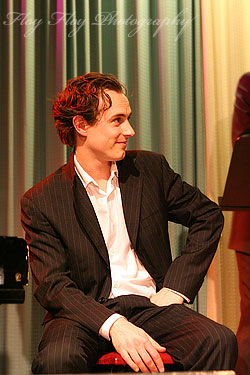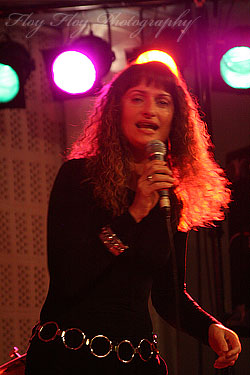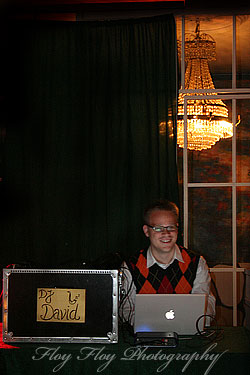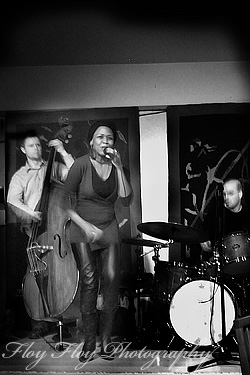
This is the second part of an interview with
Ralph G. Giordano who recently published his book
Social Dancing in America: A History and Reference Volume 2 Lindy Hop to Hip Hop, 1901-2000.
[
Part 1: How come you wrote a book about social dancing in America?]
Part 2: Which dances do you write about in the book?Chapter 1: Animal Dances, The Castles, and Ragtime: 1901–1919
- Cakewalk, 1890 to 1900 (African American)
- Two-Step, 1890 to 1910 (American vernacular)
- Texas Tommy, 1901 to 1905 (African American)
-
Ballin’ the Jack, 1901 to 1905 (African American)
- The Slow Drag, 1901 to 1905 (African American)
- Animal Dances: 1910 to 1920 (American vernacular)
Turkey Trot,
Chicken Scratch,
Monkey Glide,
Grizzly Bear,
Bunny Hug.
- Fox Trot, 1910 to 2000 (American vernacular)
- The One-Step, 1910 to 1920 (American vernacular)
- The Castle Walk, 1915 to 1920 (American vernacular)
- Hesitation Waltz, 1910 to 1920 (American vernacular)
- Apaché, 1910 to 1920 (Paris)
- Maxixe 1910 to 1920 (Brazil)
- Argentine Tango, 1905 to 1920 (South America / Caribbean.)
- Tango, 1905 to 1925 (South America / Caribbean.)
Chapter 2: The Charleston, Flappers, and Jazz: 1920 – 1932- Black Bottom, 1919 to 1927 (African American)
- The Charleston, 1922 to 1929 (American vernacular and African American)
- Fox Trot, 1910 to 2000 (American vernacular)
-
Lindy Hop, 1927 to 1945 (American vernacular)
- Rhumba, 1930 to 2000 (Cuba)
- The Quickstep, 1921 to 1929 (American vernacular)
- The Shimmy, 1922 to 1924(African American)
- Varsity Drag, 1927 to 1929 (American vernacular)
Chapter 3: The Lindy Hop, Jitterbug, and Swing: 1932 – 1947
-
The Big Apple, 1938 to 1940 (American vernacular and African American)
- Conga, 1938 to 1945 (Brazil and South America)
- Fox Trot, 1910 to 2000 (American vernacular)
- Jitterbug, mid-1930s to 1945 (American vernacular)
- The Lambeth Walk, 1938 to 1940 (Northern Europe)
- Lindy Hop, 1927 to 1945 (American vernacular)
- Rhumba, 1930 to 2000 (Cuba)
- Samba, 1939 to 2000 (Brazil)
- The Shim Sham, mid-1930s to 1945 (American vernacular)
Chapter 4: The Mambo, American Bandstand, and Rock ’n’ Roll: 1947 - 1960
- The Bop, late-1950s (American vernacular)
- The Bunny Hop, 1953 to 1960 (American Vernacular)
- Cha-Cha, 1955 to 2000 (Cuba)
- The Fish, late-1950s (American vernacular)
- The Hand Jive, late-1950s (American vernacular and African American)
- Hokey Pokey, 1947 through 2000 (American vernacular)
- The Madison, late-1950s (American vernacular)
- Mambo, 1954 to mid-1960s (Cuba)
- Merengue, late-1950s to mid-1960s (Dominican Republic)
- Polka, 1947 to mid-1960s (Czech)
- Square Dancing, 1947 through 2000 (European English)
- The Stroll, late-1950s (American vernacular)
- Tarantella, 1947 through 2000 (Italian)
Chapter 5: The Twist, Doing Your Own Thing, and A Go-Go: 1960 – 1969- Boogaloo, 1966 to 1969. (Afro-Cuban and Puerto Rican)
- Bossa Nova, mid-1960s (South American)
- The Bostella, 1965 to 1966 (Paris, France)
- “Doing Your Own Thing,” 1965 through 2000 (American vernacular)
- The Fish- solo dance, 1961 to 1962, (American vernacular)
- The Freddy, mid-1960s (England)
-
The Frug, 1962 to 1968 (American vernacular)
- Go-Go Dancing, 1964 to 1968 (American vernacular)
- Hippie Freestyle, 1965 to 1974 (American vernacular)
- The Jerk, mid-1960s, (American vernacular)
- The Limbo, 1950 through 2000 (Caribbean)
- Mashed Potato, 1961 to 1963 (African American)
- The Monkey, 1963 to 1964 (American vernacular)
-
The Pachanga, 1961 to mid-1960s (Cuba and Latin Caribbean)
- Solo Dance Fads, 1961 to 1966
- The Swim, 1964 to 1965 (American vernacular)
-
The Twist, 1960 through 2000 (African American)
-
The Watusi, 1961 to 1962 (American vernacular)
Chapter 6: The Hustle, Saturday Night Fever, and Disco: 1970 – 1979
- American Hustle, 1975 to 1979 (Latin American)
- The Breakdown, 1974 to 1976 (African American)
- The Bump, 1975 to 1979 (American vernacular)
- The Bus Stop, 1975 to 1979 (American vernacular)
- Disco Line Dances, 1975 to 1979 (American vernacular)
- Disco Freestyle, 1975 through 2000 (American vernacular)
- Latin Hustle, 1975 to 1979 (Latin American)
- The Lock, 1974 to 1976 (African American)
- The Hustle, 1975 to 1979 (Latin American)
- The L. A. Hustle, 1975 to 1979 (Latin American)
- New York Hustle, 1975 to 1979 (Latin American)
- Reggae, 1975 through 2000 (Jamaica)
- Scooby Doo, 1974 to 1976 (African American)
- Shout!, 1978 through 2000 (American vernacular)
- Time Warp, 1977 to late-1980s (England)
- Toga, 1978 through 2000 (American vernacular)
- Y-M-C-A, 1978 through 2000 (American vernacular)
Chapter 7: Breakdancing, Country Dancing, and the Swing Dance Revival: 1980 - 2000
- Breakdancing, 1970 to mid-1980s (African American)
- Country Line Dancing, 1990 to 2000 (American vernacular)
- Country Dancing, 1980 through 2000 (American vernacular)
- East Coast Swing, 1990 through 2000 (American vernacular)
- The Electric Slide, 1989 through 2000 (American vernacular)
- Hip-hop, late-1980s through 2000 (African American)
- “House Music,” mid-1980s through 2000 (American vernacular)
- Krumping, late-1990s through 2000 (African American)
- Lindy Hop Revival, mid-1980s through 2000
- The Lambada, 1988 to 1991 (Brazil)
- Macarena, 1993 to 2000 (Spain and South America)
- Moonwalk, 1983 to 1990 (African American)
- Rave, mid-1980s through 2000 (Urban American),
- Salsa, 1980 through 2000 (Latin American and Caribbean)
- Square Dancing, 1947 through 2000 (American vernacular)
- Swing Revival, 1992 through 2000 (Urban American),
- Shag, 1947 through 2000 (American vernacular)
- Slam Dancing, 1980 to mid- 1990s, (England and Urban American),
- Two Step, 1980 through 2000 (American vernacular)
- Vogueing, 1990 to 1995 (Urban American),
- West Coast Swing, mid-1950s through 2000 (American vernacular)


 Yesterdays jazz festival, Uppsala Winter Swing, was so much fun. An overdose of jazz was just right. Thanks to the organizers I had the opportunity to photograph many of the musicians. Thank you, Björn Sjödin!
Yesterdays jazz festival, Uppsala Winter Swing, was so much fun. An overdose of jazz was just right. Thanks to the organizers I had the opportunity to photograph many of the musicians. Thank you, Björn Sjödin! Swing disc jockey David Kågedal dj:ed last night at
Swing disc jockey David Kågedal dj:ed last night at 


 In a few weeks, on Jan 27th, the annual jazz festival in Uppsala,
In a few weeks, on Jan 27th, the annual jazz festival in Uppsala, 


